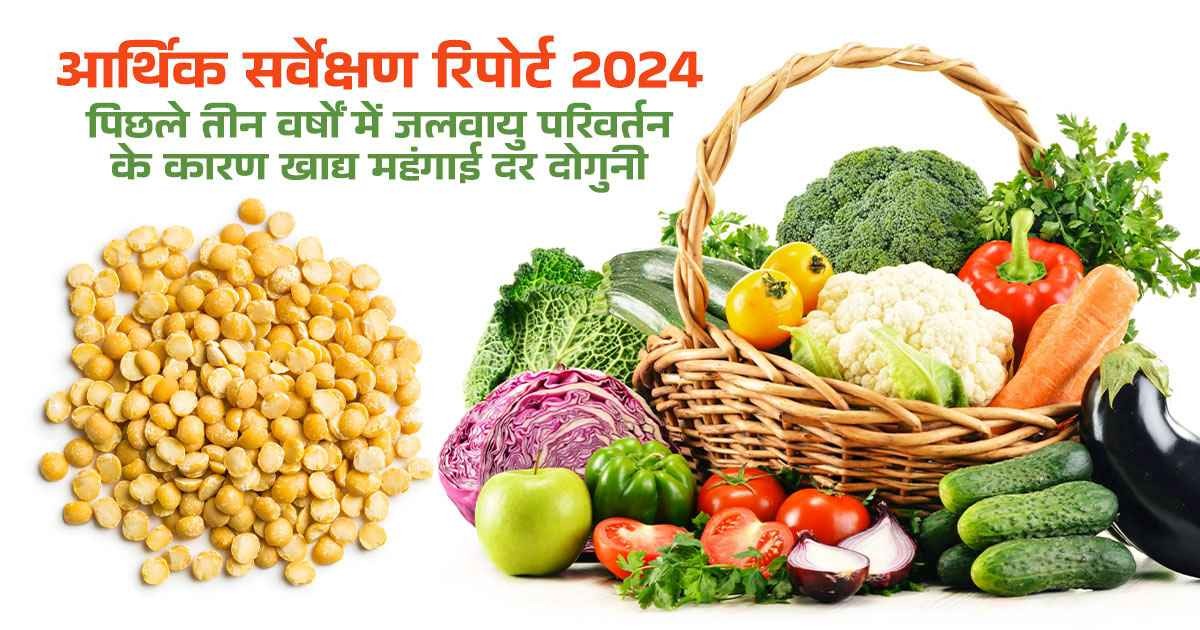
The Economic Survey 2024 reveals that food inflation has doubled over the past three years due to abnormal monsoon patterns, climate change, and crop diseases. The survey also highlights that the national policy to shift people from agriculture to non-agricultural sectors is not achieving the expected employment and wealth creation. Chief Economic Advisor to the Ministry of Finance, V. Anantha Nageswaran, recommends a "return to roots" approach. He suggests making the agricultural sector attractive and productive for India's urban youth to revive the sector and address current economic challenges.
The Economic Survey 2023-2024 reports that climate change has become a significant factor in driving food inflation. Finance Minister Nirmala Sitharaman presented the Economic Survey 2023-24 to the Parliament on July 22, a day before the presentation of the Union Budget. Food inflation, based on the Consumer Food Price Index (CFPI), has nearly doubled over the past three years, rising from 3.8% in FY 2022 to 6.6% in FY 2023 and approximately 7.5% in FY 2024. The report attributes the rise in food prices to adverse weather conditions.
The survey indicates that climate change has led to an increase in food prices. The recent surge in food inflation is described as a global phenomenon. The survey found that the agricultural sector faced extreme weather events, low reservoir levels, and damaged crops in FY 2023 and FY 2024, adversely affecting agricultural production and food prices. Vegetables and pulses, which constitute a significant portion of household food budgets, were severely impacted by abnormal weather conditions. The survey cited the rise in tomato prices in July 2023 as due to seasonal changes in crop production, region-specific crop diseases such as whitefly infestation, and the early arrival of monsoon rains in northern India. The increase in onion prices was also linked to weather conditions, including rain affecting the quality of rabi onions, delayed sowing in the kharif season, prolonged drought affecting kharif production, and trade measures taken by other countries.
The survey noted that extreme weather conditions over the past two years have caused significant crop damage. Lower production due to adverse weather conditions led to an increase in toor prices. Urad production was affected by slow sowing progress during the rabi season and climate change impacts in the southern states.
Striking Findings on the Agricultural Sector in the Economic Survey: The Economic Survey presents striking findings on the agricultural sector. Chief Economic Advisor V. Anantha Nageswaran suggests reversing the national goal of shifting people from agriculture to non-agricultural sectors to generate employment and ensure economic growth. He recommends returning to the agricultural sector for greater employment and wealth creation, as recent years have seen a reverse trend of people moving back to agriculture. He argued that job creation prospects in manufacturing and services sectors have significantly diminished.
Read More....Government Investment in Agricultural Research, New Hopes for Farmers
Comments by the Chief Economic Advisor in the Survey: The traditional development model saw economies transition from agriculture to industrialization and then to value-added services. Technological advancements and geopolitics are challenging this conventional ideology. Trade protectionism, resource hoarding, overcapacity and dumping, onshoring of production, and the advent of AI have increased the growth prospects in manufacturing and services. Agriculture can generate high-value addition, increase farmers' incomes, create opportunities for food processing and exports, and make the agricultural sector attractive and productive for India's urban youth.
GDP Growth Forecast for FY 2024-25: The Economic Survey projects a real GDP growth rate of 6.5-7% for FY 2024-25, with risks largely balanced. Despite various external challenges, the rapid growth of the Indian economy in FY 2023 continued into FY 2024. India's real GDP growth rate was approximately 8.2% in FY 2024, with growth exceeding 8% in three quarters of the fiscal year.